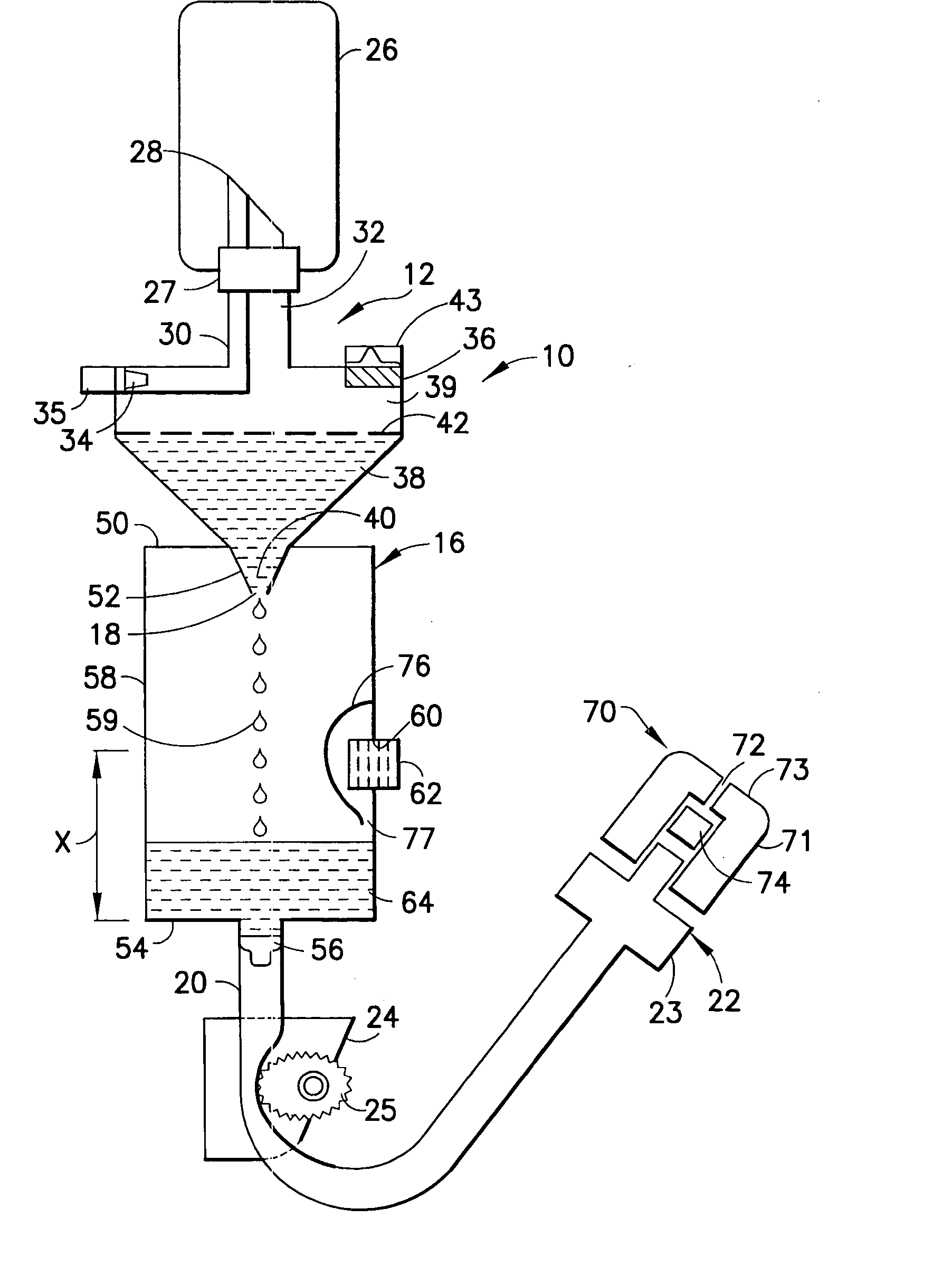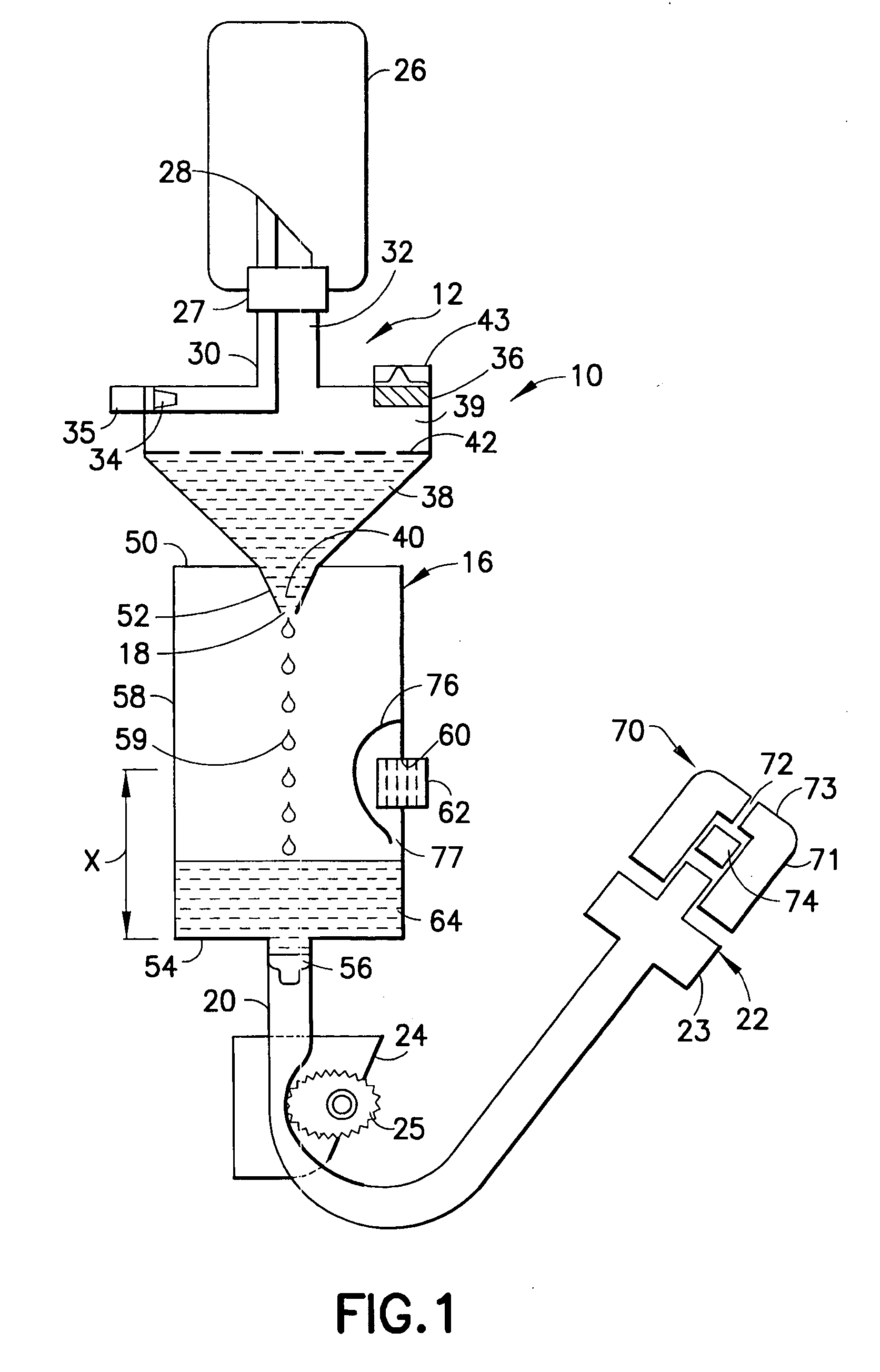Intravenous delivery system
a technology of intravenous solution and delivery system, which is applied in the direction of filtering accessories, instruments, other medical devices, etc., can solve the problems of nosocomial infection, increased time for emptying of drip chamber, and reduced volum
- Summary
- Abstract
- Description
- Claims
- Application Information
AI Technical Summary
Benefits of technology
Problems solved by technology
Method used
Image
Examples
Embodiment Construction
[0027]FIG. 1 depicts a self priming IV delivery system 10 used for administering a IV-solution through a vein of a patient. As used herein, the terms “IV-solution”, “solution” and “medicament” are intended to refer to any substance that may be administered intravenously to a patient. The solution is located in a container 26 such as a vented rigid container or bottle, or a collapsible plastic bag, as is known in the art. The IV system 10 is a hermetically sealed system and includes a solution coupling spike assembly 12 having a lancing or piercing member 28 for piercing a seal 27 on the container 26. Other primary components of the IV system 10 include a drip chamber 16, and a patient conduit or line 20 having a termination end 22 and supporting a flow controller such as a roller clamp 24 for controlling the flow of liquid medicament in the patient line 20.
[0028] Spike assembly 12 can be of various configurations as is well known to those of ordinary skill in the art. Preferably, t...
PUM
 Login to View More
Login to View More Abstract
Description
Claims
Application Information
 Login to View More
Login to View More - R&D
- Intellectual Property
- Life Sciences
- Materials
- Tech Scout
- Unparalleled Data Quality
- Higher Quality Content
- 60% Fewer Hallucinations
Browse by: Latest US Patents, China's latest patents, Technical Efficacy Thesaurus, Application Domain, Technology Topic, Popular Technical Reports.
© 2025 PatSnap. All rights reserved.Legal|Privacy policy|Modern Slavery Act Transparency Statement|Sitemap|About US| Contact US: help@patsnap.com



